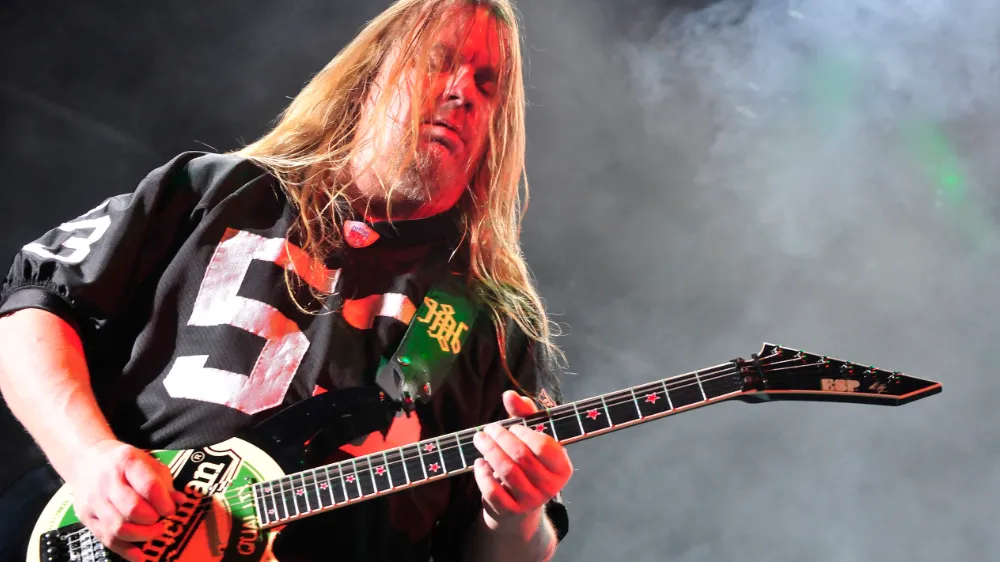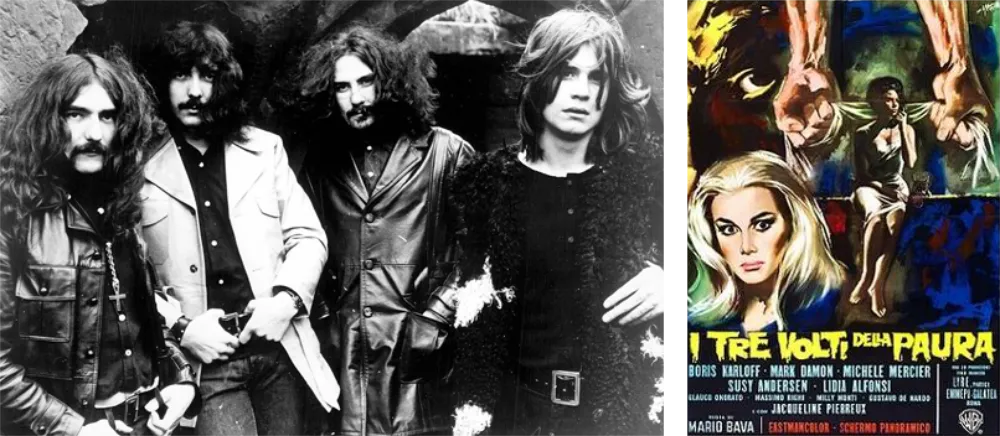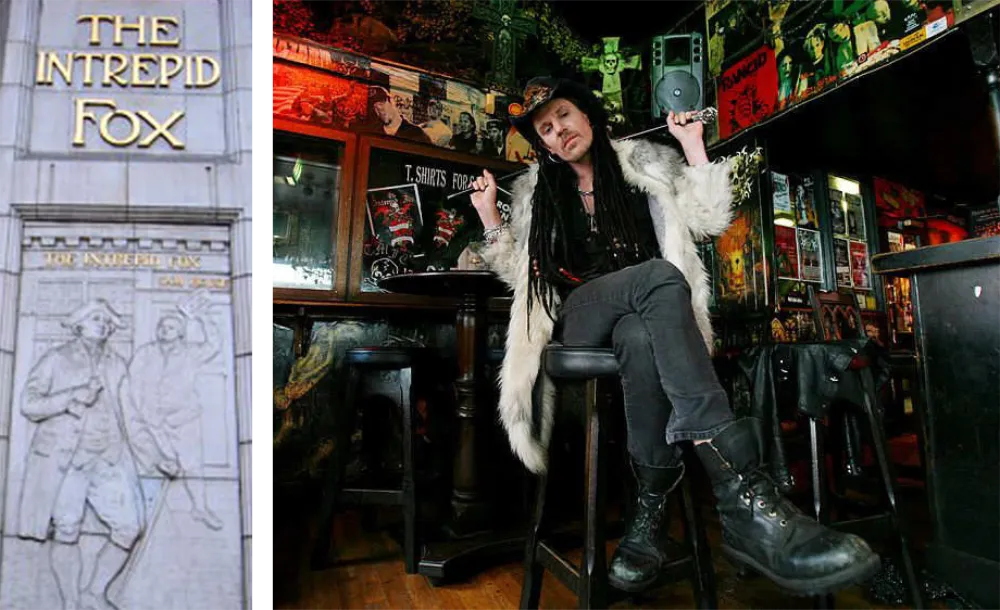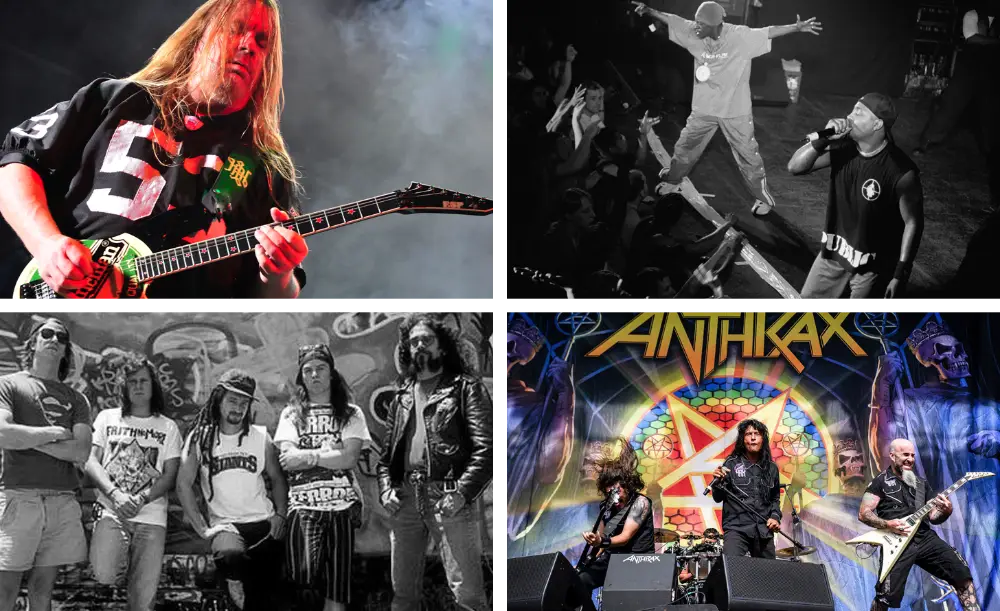
Hard rock bands emerging in the 1980s were a melting pot of genre crossover. A welcoming scene for teenagers unimpressed with corporate pop music.
In the mid-1980s, music teachers were sleep-inducing at my state, comprehensive school with the exception of one, younger hipster teacher who taught us about Blues music and Beatles songs. She was not much older than us, in her mid-twenties and very in touch with the UK music charts of the time.
One memorable lesson was dedicated to watching the feature length video for Michael Jackson’s latest hit single Thriller (1983), in its entirety. The Thriller pop video was a pastiche of a B-movie Werewolf horror flick. I was also beginning to take an interest in the guitar, though found my Aunt’s Spanish guitar uninspiring.
Once I left school in 1986 and began attending art college, I bought my first cheap, electric guitar and was soon learning Black Sabbath, a Heavy Metal band named after the 1960s horror film. By the second year at college, I had formed my own band with college friends. Our music was raw, unkempt and blisteringly loud. We reflected the emerging Skateboard/Metal scene in the USA, while also looking up to the more established British bands like Iron Maiden, Motörhead or Judas Priest.

By the end of the 1980s, pop music in the UK was conservative, while rock music offered an unlimited licence for self-expression. The social world of London’s rock clubs was diverse, friendly and welcoming, in spite of the Rocky Horror Show fashions. While this subversive, post-punk scene felt like a counter-culture, the popular metal bands of the day were selling a lot of records, without much radio airplay. Live concerts were the driving force behind record sales and the success of alternative rock music.
My social life centered on the music venues and clubs of Bohemian London. There was a sense of community without mobile phones, a shared passion for alternative music, free of dress codes and corporatism. Music fans mingled with the bands, as often a touring band would hangout at the same clubs and bars after a gig.
You might spot the Motörhead drummer having a quiet drink or play pool with a member of Metallica. In a BBC Arena documentary made at the time, Metallica drummer Lars Ulrich was interviewed at the original Intrepid Fox pub in Wardour Street. The Fox was my favourite hangout in the West End, where I felt comfortable and honed my eight-ball skills. Soon enough, I was in the Intrepid Fox pool team.

Hard rock was soon crossing over into Funk and Hip Hop, stirring up a melting pot of subversive genres. The new metal bands were as anti-establishment as rappers Public Enemy or Ice T, who formed his own metal band Body Count. It was this crossover approach to rock that inspired me to form my own band. Making music on our own terms and at the most extreme level. The sound we made was not for the faint-hearted, and lyrics would often offend the casual listener. Metal music was presented as a commentary on world events, on the flawed human condition and was predominantly made by working class bands. If the system wasn’t working for you, then loud music and subversive lyrics provided the perfect platform to channel your apathy with the elites.
As an 18-year old, my local alternative rock scene in late 1980s East London was a menagerie of generations. There were older hippies, in their 30s and 40s, those who had lived through the psychedelic era of the 1960s or were disciples of the New Wave of British Heavy Metal. While the new metal fans admired the music of veteran bands like Black Sabbath, Deep Purple or Venom, our listening was tuned to the hardcore bands emerging in the USA. Slayer, fronted by Chilean vocalist and bass player Tom Araya were formed in 1981 by guitarists Kerry King and Jeff Hanneman (1964-2013).
Slayer’s third album Reign In Blood clocks in at just below thirty minutes. The music defined Thrash Metal, rock played at breaknet speed. And the producer Rick Rubin, a populariser of Hip Hop, now seems like a catalyst for Metal/Rap crossover as Public Enemy soon sampled Angle Of Death for She Watch Channel Zero?!.

The records spun by DJs at the rock clubs I frequented in London, covered a hugely diverse range of music. That was the paradox of the youthful heavy metal scene back then, particularly in the late 1980s and early 90s. Even the more conservative pop fans might have a night off at a metal club. Because it was liberating, non-violent and creative. All the aggression was channelled through the music. Californian funk rockers Faith No More personified the new crossover sound, alongside the Red Hot Chilli Peppers and later Rage Against The Machine. Metal music was opening up, there were no rules as long as you played (and dressed) loudly and made a statement.
I recall Faith No More’s breakthrough funk/metal single We Care A Lot, featuring original vocalist Chuck Mosley. The sound was vaguely familiar, recalling the sound of the punk and dance music I’d heard as a child growing up in the 1970s. It was okay for hard rock to have rhythm. Led Zeppelin had ten years earlier dabbled in Reggae and Funk, but this new crossover sound was authentic, the musicians themselves were from a diversity of cultural upbringings, and the fans and nightclub scene reflected this change.
Body Count’s version of Slayer’s Raining Blood from 2017. A must watch for metal fans! The band have nailed the music, which is extremely tough to play.

Perhaps the ultimate crossover band are LA’s Body Count, familiar to Hip Hop fans as Ice T’s metal side project. By the end of the decade there were collaborations between Anthrax and Public Enemy and Aerosmith and Run DMC. Living Colour fused Jazz, Soul with Hard Rock. Kings X revitalised Prog Rock with elements of Gospel and Blues. There was a comfort zone for everyone, a distinctive space to forge your own identity as both a fan and musician. And all these seemingly disparate musical cultures could happily coexist in a social context. We all shared a common aim to be unique as individuals, with music as our voice against the establishment. And aside from a few bike gang scuffles, I never witnessed any violence or hatred.
Meanwhile US hardcore punk was awaiting to explode into the mainstream with Nirvana, who were already on our radar with their debut album Bleach. My flat mate and band colleague was a big collector of obscure music, including eclectic artists like Bad Brains, Black Flag (Henry Rollins) and the then relatively unknown REM.
Later in the 1990s tabloid journalists coined the Grunge catch-all phrase, in an attempt to sell a more corporatised version of hard rock to the public. The adverse affect of grunge’s popularity was that alternative bands were propelled into the corporate glare, including Kurt Cobain who took his own life in 1994.

By the time Rage Against The Machine released their debut album in 1992, and at the ripe old age of 22, I was beginning to feel like a veteran. That period in metal music had been through an immense transformation. My music tastes were opening out into the UK’s own crossover scene too, with bands like Happy Mondays, Massive Attack and Primal Scream forging a new alternative scene. The UK has a long tradition of soul and dance music. Probably why I connected with the Hip Hop/Funk inspired metal bands. But I also liked loud guitars and enjoy Slayer or Judas Priest to this very day.
I was part of a vibrant world of decent people who liked to express themselves through music and art. These scenes still exist out there, but it’s increasingly hard to congregate in a public setting, with venues focusing less on music.
By the start of the millennium I had moved to South London, which although just across the Thames, felt like a big sea change in my life. I left behind the alternative lifestyle to focus on my career. I certainly could not have sustained the hedonistic social life I was leading. However, crossover music and alternative rock remains part of my identity and inspires new generations. There remains a healthy, digital underground scene now, thanks to the democratisation of music production.
Here’s a Spotify playlist featuring music by the notable artists from that 1980s period of incredible diversity. There’s also an Apple Music version.